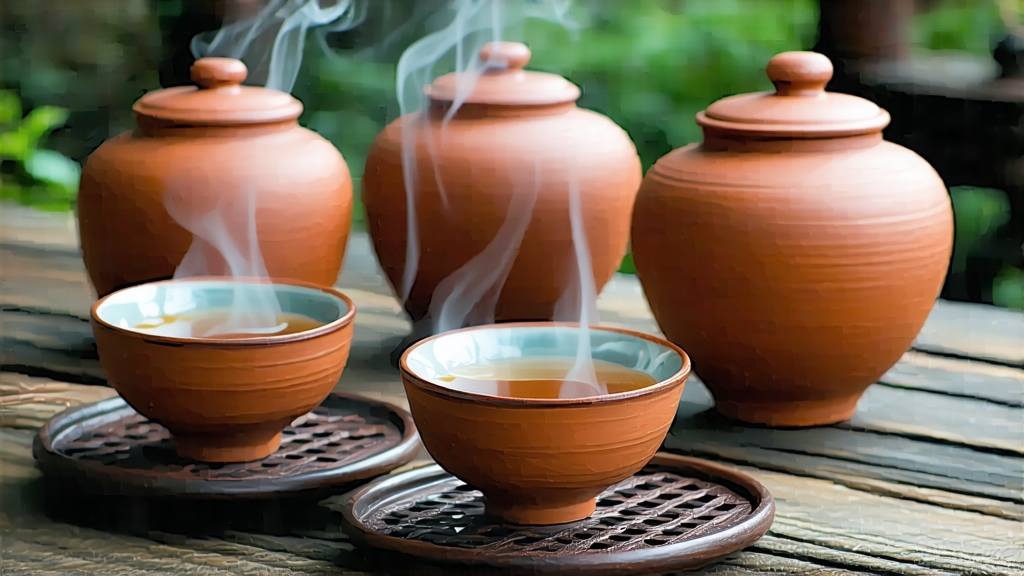
Tucked away in the subtropical karst hills of southern China’s Guangxi Zhuang Autonomous Region, Liu Bao tea has spent four centuries quietly fermenting its way into the hearts of Cantonese merchants, Southeast Asian dockworkers, and, more recently, global tea aficionados. While Pu-erh often hogs the dark-tea spotlight, Liu Bao is the older, humbler sibling that crossed mountain ranges and oceans in bamboo baskets, acquiring a mellow, medicinal character that tastes like the earth itself decided to brew a cup.
1. From Military Road to Tea Road: A Brief History
The name “Liu Bao” literally means “Six Forts,” a reference to the six defensive garrisons established during the Ming dynasty along the trade route that linked Guangxi’s tea-producing Wuzhou County with the Pearl River Delta. Caravans of mules and porters carried compressed bamboo-wrapped baskets of rough tea southward, where it was loaded onto junks bound for Hong Kong, Malaya, and Indonesia. The humid hold of a wooden vessel turned out to be an ideal incubator for post-fermentation; after weeks at sea the tea arrived darker, smoother, and suddenly prized by dockside populations suffering from the heat and damp. By the Qing era Liu Bao had become a currency of its own—one basket could pay a laborer’s month’s wage in Singapore.
2. Leaf, Picking, and the Microbiome
Liu Bao is made almost exclusively from the large-leaf Camellia sinensis var. assamica that clings to the limestone cliffs of the Dayao Mountains. Farmers pluck one bud with three or four mature leaves in late April, after the spring rains have swollen the cellulose thick with minerals. The broad blades are naturally high in polyphenols and pectin—perfect substrates for the yeasts, molds, and bacteria that will soon colonize them.
3. Crafting the Darkness: A Six-Act Play
Unlike green tea that chases freshness, Liu Bao courts time and microbes. The traditional process has six stages, each named for what it does rather than what it is, a linguistic reminder that tea-making is action, not object.
- Withering (Shaiqing): Fresh leaves are spread on bamboo mats under a morning sun so gentle it barely wrinkles the skin. The goal is to evaporate 15 % of moisture while jump-starting enzymatic oxidation.
- Kill-Green (Shaqing): A five-minute tumble in a 200 °C wok halts green enzymes but leaves microbial spores intact—like locking the front door while leaving the cellar window open.
- Rolling (Rounian): The hot leaves are kneaded until they resemble twisted wire, rupturing cell walls so that later microbial metabolites can seep inward.
- Sun-Drying (Rigan): Under the subtropical sun the leaf moisture drops to 10 %, concentrating sugars that will feed the forthcoming fermentation.
- Wet-Piling (Wo Dui): The signature step borrowed from 1970s Pu-erh but rooted in Liu Bao’s own shipping accidents. Leaves are sprayed with mountain water, heaped 70 cm high, and covered with jute sacks. Internal temperature climbs to 55 °C for ten days while Aspergillus niger, Blastobotrys adeninivorans, and a clique of local yeasts bloom, turning the leaf pile from moss green to the color of bitter chocolate.
- Bamboo-Basket Aging (Luo Chen): The fermented tea is steamed, compressed into 40 kg bamboo baskets lined with wild taro leaves, and wheeled into limestone caves whose relative humidity hovers at 85 %. There it will nap for a legal minimum of one year, though connoisseurs prefer three, ten, or even thirty. Each season the cave “breathes,” drawing in fragrant air from nearby cinnamon forests, gifting the tea a scent locals liken to “old betel nut and sweet tree bark.”
4. The Taste of Geology
A well-aged Liu Bua steeps into a liquor the color of black opal. The first sip is always a shock: moist forest floor, dried longan, and something metallic like rainwater collected in a bronze urn. The second infusion brings out camphor and a fleeting note of fermented soy, while the third slides into jaggery sweetness that lingers on the teeth. The body is thick, almost